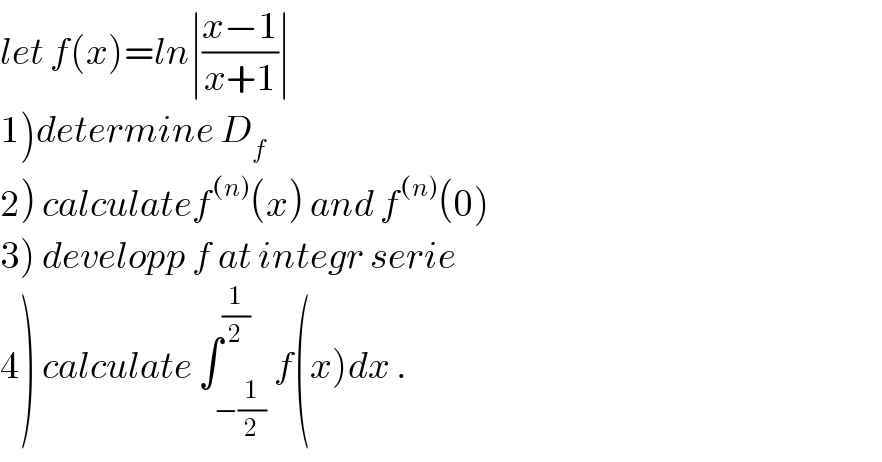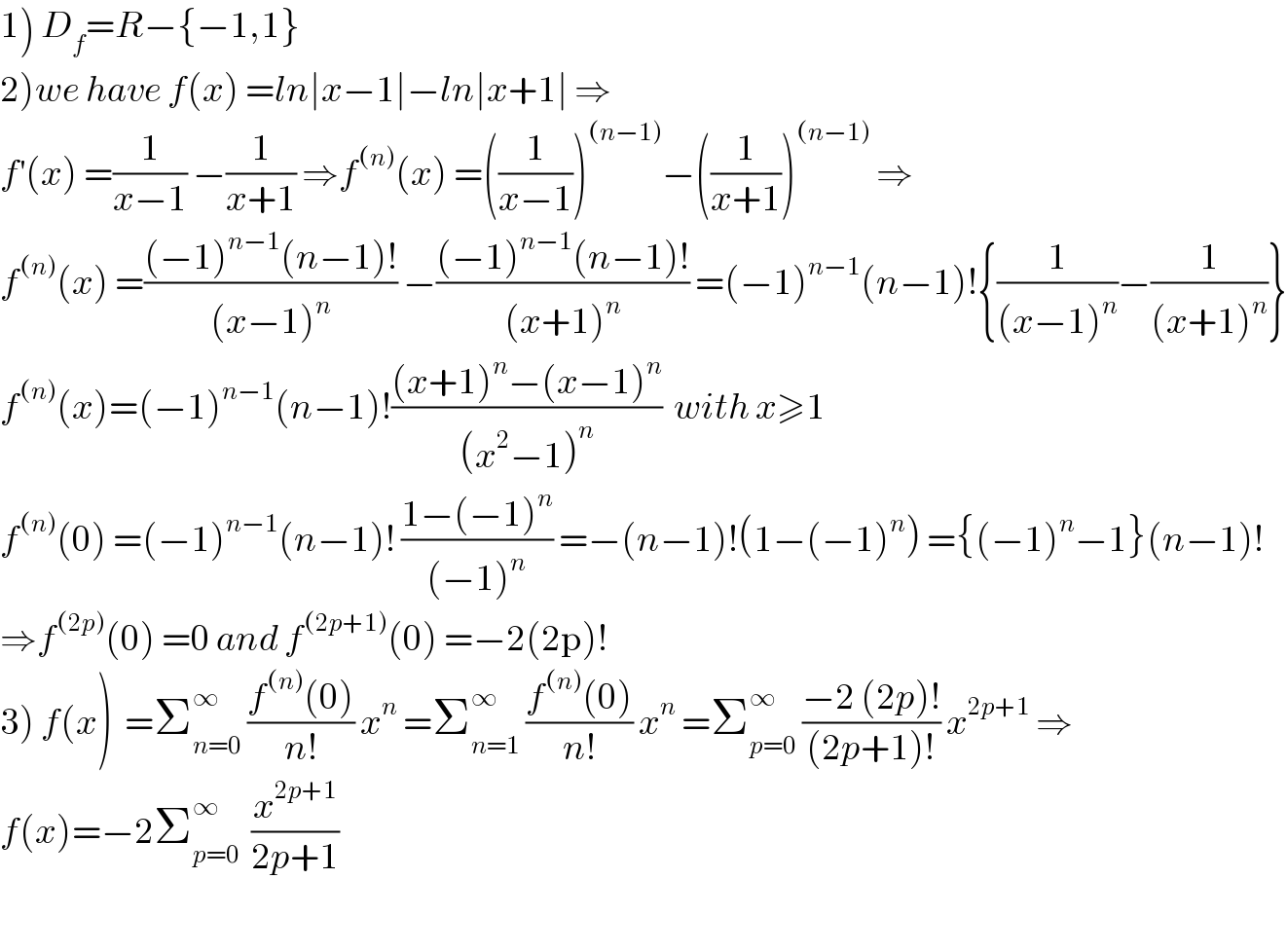
Question and Answers Forum
Previous in Relation and Functions Next in Relation and Functions
Question Number 62882 by mathmax by abdo last updated on 26/Jun/19

Commented by mathmax by abdo last updated on 27/Jun/19
![4) ∫_(−(1/2)) ^(1/2) ln∣((x−1)/(x+1))∣dx =∫_(−(1/2)) ^(1/2) ln∣1−x∣ dx −∫_(−(1/2)) ^(1/2) ln∣1+x∣ dx =∫_(−(1/2)) ^(1/2) ln(1−x)dx −∫_(−(1/2)) ^(1/2) ln(1+x)dx =H−K H =_(1−x =t) ∫_(3/2) ^(1/2) ln(t)(−dt) =∫_(1/2) ^(3/2) ln(t)dt =[tln(t)−t]_(1/2) ^(3/2) =(3/2)ln((3/2))−(3/2) −(1/2)ln((1/2))+(1/2) K =∫_(−(1/2)) ^(1/2) ln(1+x)dx =_(1+x =t) ∫_(1/2) ^(3/2) ln(t)dt =[tln(t)−t]_(1/2) ^(3/2) =(3/2)ln((3/2))−(3/2) −(1/2)ln((1/2))+(1/2) ⇒ A =(3/2)ln((3/2))−(3/2) −(1/2)ln((1/2))+(1/2) −(3/2)ln((3/2))+(3/2) +(1/2)ln((1/2))−(1/2) ⇒ A =0 another[way let prove that f is odd we have f(−x) =ln∣((−x−1)/(−x+1))∣ =ln∣((x+1)/(x−1))∣ =−ln∣((x−1)/(x+1))∣=−f(x) ⇒ ∫_(−(1/2)) ^(1/2) f(x)dx =0.](Q62977.png)
Commented by mathmax by abdo last updated on 27/Jun/19

Commented by mathmax by abdo last updated on 27/Jun/19

